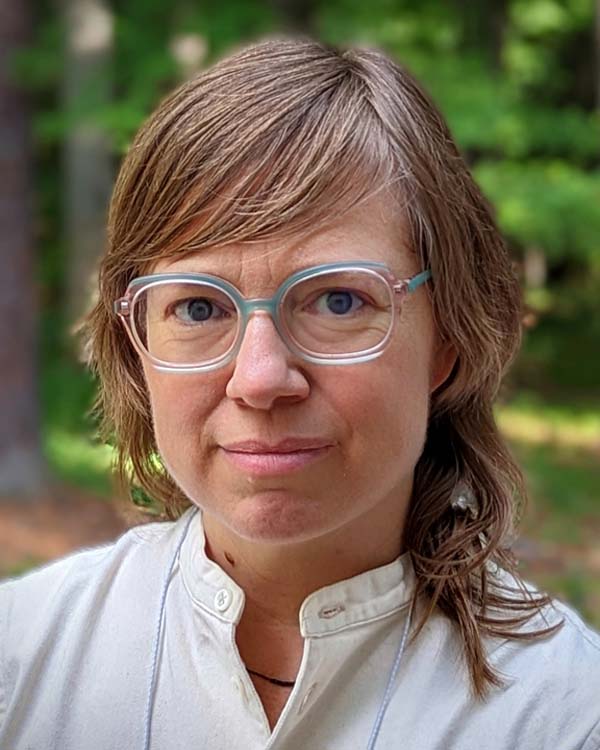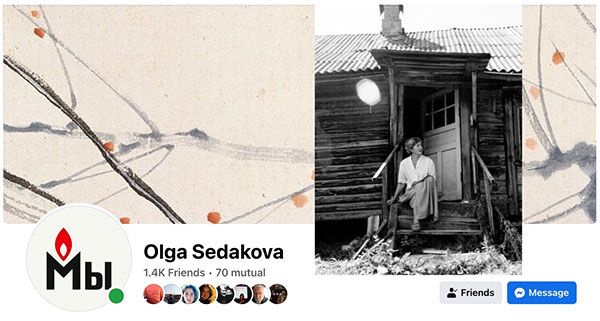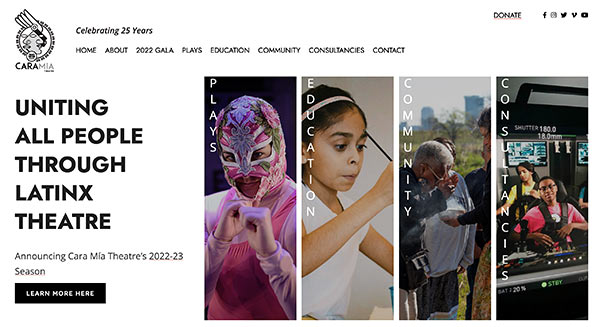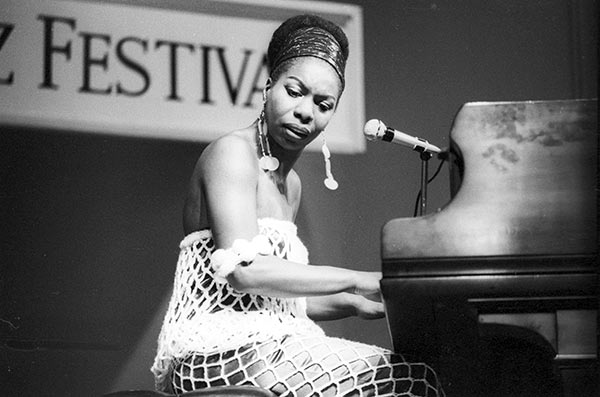In this issue we highlight the research of Fellows from the class of 2022–23 whose projects examine the powerful influence artists can have, affecting the lives of others and the culture at large well beyond the page, the stage, or the recording studio.

Martha M. F. Kelly
University of Missouri

Elena Machado Sáez
Bucknell University

W. Jason Miller
North Carolina State University
Martha M. F. Kelly
How to Be a Russian Icon: The Post-Soviet Public Life of Poet Olga Sedakova
Martha M. F. Kelly is associate professor of Russian at the University of Missouri in the School of Languages, Literatures, and Cultures. She is a scholar of poetry, religion and society, with one foot in modernism and another in contemporary Russian-language poetry. Her first monograph, Unorthodox Beauty: Russian Modernism and its New Religious Aesthetic (Northwestern University Press, 2016), shows how poets negotiated Russia’s relation to modernity through re-envisioning traditional religion in their own work. She is at work on a second monograph on contemporary Russian poet, scholar, essayist, and translator Olga Sedakova (b. 1949), and on her role in Russian public life.

What was the initial spark that led you to this project? What are the big questions that you are considering?
I met Sedakova in 2007, not really knowing who she was. Then, a poetry reading she gave shifted my categories for contemporary poetry, and I wanted to understand what lent these poems their shape and force, and what stories led to their creation.
Since that time, I have come to realize how significant a figure she is in the contemporary literary and public landscape in Russia and beyond, as well as how innovatively she engages religious, philosophical, and mystical traditions to substantiate renewed visions of community, polity, and the common good.
My book focuses on how Sedakova negotiates the role of the poet in post-Soviet society, even as the Russian political regime has grown increasingly violent and repressive.
In the course of your research have you run across anything that genuinely surprised you? What can you tell us about it?
When I was already half a decade into this project, one of the scholars who has done foundational work on Sedakova, Stephanie Sandler, urged me to get on Facebook so I could witness Sedakova’s interventions there. I took her advice and discovered how this dignified writer of metaphysical poetry was playful and politically engaged in turn, posting about cats, composers, historic atrocities, and solemn commemorations in close proximity.
I’m still determinedly not “on Facebook” or “on social media” in the way people usually use those phrases; but since that time, I have begun to study how Sedakova constructs a new media poetics as a way of weaving together a “cloud of witnesses,” networks that might catalyze social transformation through shared stories and concerns.
What new avenues of inquiry do you hope this research will prompt or make possible in your field?
Amongst other things, Sedakova is a religious thinker whose poetry and prose constitute theological and political interventions of a kind. In my work I am always trying to open up new paths for understanding the possible relations of religion and society, and of poetry and society. Sedakova’s writings offer new ways of imagining, and even constituting, the public sphere. They also provide novel ways of engaging ancient religious tradition in analog, digital, secular and post-secular worlds.
Elena Machado Sáez
Staging Activism in US Latinx Theater
Elena Machado Sáez is professor of English and John P. Crozer Chair of English Literature at Bucknell University where she teaches courses on contemporary American, US Latinx, and Caribbean diaspora literatures. She has published several essays about Lin-Manuel Miranda, including “Debt of Gratitude: Lin-Manuel Miranda and the Politics of US Latinx Twitter,” in archipelagos and “Blackout on Broadway: Affiliation and Audience in In the Heights and Hamilton” in Studies in Musical Theater. Her most recent publication, “Hype it Up: US Latinx Theater on TikTok,” appears in TikTok Cultures in the United States (2022), edited by Trevor Buffone. She is also the author of Market Aesthetics: The Purchase of the Past in Caribbean Diasporic Fiction (University of Virginia Press, 2015) and coauthor of The Latino/a Canon and the Emergence of Post-Sixties Literature (Palgrave Macmillan 2007).

What was the initial spark that led you to this project? What are the big questions that you are considering?
After teaching US Latinx theater courses for several years, I was frustrated that my selections were limited by what was published. Several questions arose that guide my research: What other paths exist for the circulation of Latinx plays? How do playwrights record their creative process and stage productions? How are archival practices by and for Latinx communities a form of activism?
While teaching these theater courses, I was also performing research on Twitter to see how Lin-Manuel Miranda’s social media use compared to that of other US Latinx writers. I found numerous playwrights who highlighted activism projects within the US Latinx community and this inspired another set of research questions: How might such an investment in activism translate into its depiction on stage? What does activism look like in US Latinx plays?
In the course of your research have you run across anything that genuinely surprised you? What can you tell us about it?
As I researched the landscape of social media, I was struck by the sheer number of contemporary playwrights I didn’t know, who weren’t included in US Latinx literary and theater anthologies. I learned about online databases like The New Play Exchange and playathome, which provided access to scripts I wouldn’t otherwise read. I was also surprised by the lack of criticism written about theater-makers who are considered part of the US Latinx theater canon, for example, Cuban-American playwright Dolores Prida. And finally, I just so happened to be in Wilmington for the Delaware Shakespeare company’s public and free production of a bilingual reinterpretation of Twelfth Night. This serendipitous discovery expanded the range of plays I will analyze as part of my research project.
What new avenues of inquiry do you hope this research will prompt or make possible in your field?
One of my goals is to expand and update the published canon of US Latinx theater by bringing contemporary playwrights to the attention of presses and scholars. I hope to also foreground the spaces that contemporary US Latinx theater-makers have created to circulate their work, for example, establishing new institutions and organizations, as well as using social media. By highlighting the continued relevance of the 1960s, I want scholars to more fully appreciate the innovative visions of activism and archival practice that contemporary playwrights offer. At the same time, these plays complicate the mainstream narrative of the Sixties as one of triumphant social movements, revealing how such a utopic story of progress prevents us from understanding both the potential and limits of its activist model of empowerment.
W. Jason Miller
Backlash Blues: Nina Simone and Langston Hughes
W. Jason Miller is Alumni Distinguished Undergraduate Professor at North Carolina State University. His monographs include Langston Hughes: Critical Lives (Reaktion/University of Chicago Press, 2020), Origins of the Dream: Hughes’s Poetry and King’s Rhetoric (University Press of Florida, 2015), and Langston Hughes and America Lynching Culture (University Press of Florida, 2011). He is a member of the North Carolina State University Research Leadership Academy, Academy of Outstanding Teachers, and Academy of Outstanding Faculty in Extension and Engagement.

What was the initial spark that led you to this project? What are the big questions that you are considering?
While launching my 2020 biography of Langston Hughes at Busboys and Poets in Washington, D.C., I told a story about Hughes working as a busboy in the city. Wanting to offer the same local color at my next event in Raleigh, I told an audience at Quail Ridge Books that Hughes was asked by a musical friend to write the liner notes for an album in 1964. He answered, “Why yes, I’d be happy to, Nina!” The crowd’s unforgettable collective gasp told me I needed to learn even more about Tryon, NC-born Nina Simone’s relationship with Langston Hughes. That’s how this project started. One big question I’m asking is, “Why have we neglected to recognize Langston Hughes’s impact within the civil rights movement of the 1960s?”
In the course of your research have you run across anything that genuinely surprised you? What can you tell us about it?
Multiple things have surprised me. One of them is the fact that Langston Hughes directly inspired Nina Simone to sing four of her most iconic songs. Unbeknownst to anyone, one of these songs is “I Put a Spell on You.” The song is so well known it served as the title of her autobiography and has forever shaped her image ever since as “The High Priestess of Soul.”
What new avenues of inquiry do you hope this research will prompt or make possible in your field?
I hope this new research will prompt these scholarly fields to recognize how critical it still is to collapse the distance between art, politics, and culture. This inter-relationship helped Simone create the soundtrack of the 1960s civil rights movement. How did the movement itself take cues and energy from Simon’s music to organize, brand itself, and vocalize its emotions and demands in ways that policy and narrative can not? It is interesting to me that narrative arguments often conceal personal passion, while metaphor (so critical in poetry and song) expands on such feelings through its beauty, force, and wide-ranging suggestivity.
